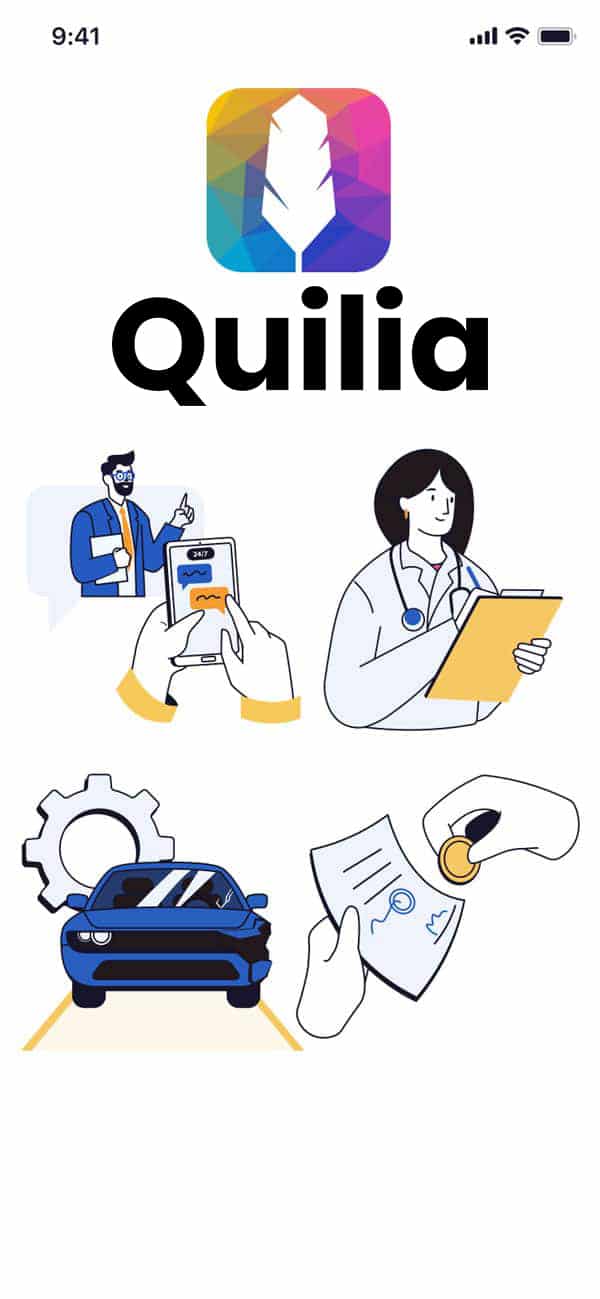Automated Case Updates for Law Firms
Effortless communication without extra work for law firms.
Quilia's automated messaging tool sends prewritten messages to clients automatically when a case phase changes, ensuring they are always in the loop without adding any additional work for the law firm. Here's how it works:
Automatic updates with prewritten messages.
As soon as a case phase changes in the case management software, Quilia automatically sends a prewritten message to the client explaining the update. This saves time and keeps clients informed without any manual work from the law firm.
Real-time notifications.
Clients receive real-time notifications the moment their case moves forward. These timely updates allow clients to stay up to date on their case's progress, reducing their need to call and check in with the law firm.
Reduce communication overload.
By automating client communication, law firms can alleviate the heavy burden of repetitive calls and inquiries. Quilia helps firms manage communication efficiently, allowing attorneys to focus on their cases while clients stay informed.
Messaging & Notifications FAQs
Can I send messages to all my clients at once?
Yes. If you update a case phase in your CMS, Quilia automatically sends the related phase message to every connected client.
Do clients get both text and email invites?
Nope, just a text message with a magic link. That's all they need to get started.
How does Quilia communicate with clients?
Quilia primarily uses push notifications through the mobile app to communicate with clients. We also send text messages as a fallback for clients who don't have the app installed or have notifications disabled. This ensures clients always receive important updates about their case.
Can Quilia send automatic reminders to clients?
Yes. We send strategic reminders for things like medical appointments and even confirm if they went, so your staff doesn't have to chase them down.
Can I assign tasks or requests to clients?
Yes. We call them "requests." You can ask for documents, info, or anything else, and they'll see it as a to-do in the app.
How do I know when a client responds?
You'll get a notification in our Chrome extension or an email. Some CMS setups can also assign it directly to your team.
Can I delete a message after sending it?
Yes. You can delete it from the dashboard and the client won't be able to see it anymore.
Can I delay notifications after a phase change?
Yes. Phase messages are queued to send the following morning. That gives you time to make edits or changes without sending multiple alerts.
Can client messages be routed to specific team members?
Yes. You can set up routing so responses go to the right person based on team roles in your CMS or dashboard.
Can I see if a message hasn't been read yet?
Yes. Unread phase messages are clearly visible in your dashboard reporting.
How are case updates sent to clients?
Whenever a case phase changes in your CMS, Quilia automatically sends a prewritten message to the client. No extra typing, no manual push required.
Do clients get real-time notifications?
Yes. Updates are delivered instantly, so clients always know where their case stands without having to call your office.
Does this reduce client phone calls?
Big time. Automated updates cut down on repetitive check-ins, freeing up your team’s time while keeping clients in the loop.
How important are automated case updates in Quilia?
They’re solid and definitely useful—clients love staying in the loop without needing to call your office. But we don’t stop there. Case phases don’t change every day, so Quilia focuses on something even bigger: capturing client data in real time and delivering it to attorneys when it matters most. Automated updates are part of the package, not the whole story.
How is Quilia’s messaging different from Hona or Case Status?
Hona and Case Status lean heavily on phase-change notifications. Quilia includes those too, but we treat them as just one piece of the puzzle. Our messaging is tied into client data collection and case progress, so attorneys get updates that actually move the case forward—not just alerts for the sake of alerts.
Why not just use a platform built around notifications?
Phase notifications are helpful, but they don’t change often enough to drive real engagement on their own. Quilia goes further by combining automated updates with treatment tracking, requests, and real-time client data. That way clients stay informed and attorneys get actionable info that improves outcomes.

